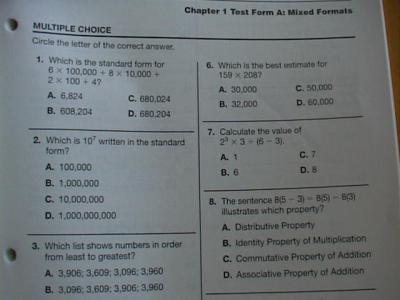Scott Foresman Science Lab Manual Grade 5
Science books are available for all levels of elementary education. The books are all published by Pearson. The books are written to complement state curriculum, as the are created as compliments to the required program. Books for each level are separated into different units. For example the books in Grade 4 include units in earth science, space and technology, physical science and life science. Each lesson provides important content as well as hand-on activities to further cement the science lesson.
Chapters are designed to link reading and science skills, provide activities, lesson preparation set ups, and time saving strategies. The textbooks are for both students and teachers. The main purpose of the books was to spend less time planning the day’s activities and lessons and more time having students performing the science activity.
Science Lab Manual For Class 9
These Scott Foresman science plans and books are very popular to both student and teachers. Teachers find that students can easily read the lessons. The books also offer both visual and reading learning options as many of the books contain visual aspects for key vocabulary. All the colorful graphics, photographs and illustrations make the books very engaging. Each teachers’ guide that accompanies the Scott Foresman science books are easy to follow and very useful. Each one contains different options for teaching techniques and activities.


The integration of science with social studies and mathematics also makes this a popular choice for teachers. In several studies the main challenges to teaching science have been getting students to become aware of science used around them, instil and interest in the topic and to provide hands on experiments. Therefore the Scott Foresman science series have been made to address these important issues.
Environmental Science Lab Manual
Additionally the Scott Foresman science series meets the concern that most teachers do not have the necessary time to complete lessons an experiments. Therefore tasks are designed for different time lengths with options for students to learn themselves. The amount of time and research that is involved in developing the Scott Foresman science books and lessons helps set these books apart from other programs. The textbooks are tested in different schools and locations around the United States.
Feedback is received from teachers and students and the writers incorporate the main suggestions for what needs to be changed, in order to produce top quality teaching and learning texts. Therefore you can be assured that all Scott Foresman science programs will constantly evolve and change to meet the curriculum, student and teacher needs. Educators do not need to worry about teaching outdated material with Scott Foresman science books. Besides being used in schools the Scott Foresman science texts can also be used for home schooling or to help a student that has difficulty with science. Parents can use these texts to cement lessons learned in class.
Series Author: Timothy Cooney California editions found under series Scott Foresman Science California Grades K-6 Unit A. Life Science - Unit B. Earth Science - Unit C. Physical Science - Unit D. Space and Technology - 2000 edition: Student textbooks - Teacher's edition - Student workbook - Teacher's resource planner (CD-ROM) Grade 4, 5 v.1. Textbook - v.2. Workbook - v.3.
Workbook teacher's guide - v.4 Activity book - v.5 Activity book teacher's guide - v.6. Quick study, intervention study guide - v.7. Assessment book - v.8. Every student learns, teacher's guide - v.9.
Exam view test generator CD-ROM - v.10. Graphic organizer and test talk transparencies (31 transparencies).

Grade 6 Student text - Teacher's edition - Teacher's assessment package - Teachers's edition lab manual - Instructional resources - Life science - Human body - Physical science - Earth science - Activity video demo (Investigating temperature change in a reaction). How do series work? To create a series or add a work to it, go to a 'work' page. The 'Common Knowledge' section now includes a 'Series' field. Enter the name of the series to add the book to it. Works can belong to more than one series. In some cases, as with, disagreements about order necessitate the creation of.
Tip: If the series has an order, add a number or other descriptor in parenthesis after the series title (eg., 'Chronicles of Prydain (book 1)'). By default, it sorts by the number, or alphabetically if there is no number.
If you want to force a particular order, use the character to divide the number and the descriptor. So, '(0 prequel)' sorts by 0 under the label 'prequel.' What isn't a series?
Series was designed to cover groups of books generally understood as such (see ). Like many concepts in the book world, 'series' is a somewhat fluid and contested notion. A good rule of thumb is that series have a conventional name and are intentional creations, on the part of the author or publisher. For now, avoid forcing the issue with mere 'lists' of works possessing an arbitrary shared characteristic, such as relating to a particular place. Avoid series that cross authors, unless the authors were or became aware of the series identification (eg., avoid lumping Jane Austen with her continuators). Also avoid publisher series, unless the publisher has a true monopoly over the 'works' in question.
So, the Dummies guides are a series of works. But the Loeb Classical Library is a series of editions, not of works.